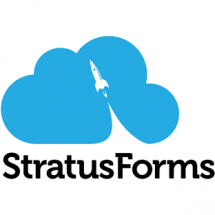Deployment planning…. Seemingly one of the more intimidating things about Office 365. Moving the cheese. Transforming the way people work. It’s exciting! And yet terrifying. On one hand, as the leader of an organization, you hold a responsibility to point the company in the direction of the most efficient way to work – and on the other – you are strapped with finding the most fiscally responsible approach. While some companies have had the benefit of being highly profitable and nimble and have upgraded their technology over time, we are still seeing plenty that are still recovering from the down turn a few years back. These organizations may have also had policies that stated they would only upgrade software like Microsoft Office every 7 years. Why fix what isn’t broken?
The problem is that we are facing technological improvements at a rapid and dizzying pace. Microsoft isn’t really allowing us to make decisions that allow us to keep the same version of software for years. We’re being pushed into a place where subscription is the name of the game and updates are pushed out faster than the blink of an eye. IT departments were the first to take resource cuts and the last to be replenished, we are doing far more with far less – less people, less resources, and most significantly, less tribal knowledge. Gone are the days where employees stay for the duration of their career, IT is especially sensitive to turnover. Not only do you have a custom software application critical to the business that suddenly needs upgraded, but the person who wrote it is long gone. Documentation? Yah right!
This leave us in a place where the IT department is treading water for dear life. Not only are we squeezed to support aging business critical applications, but we’re also facing new demands to transition to secure mobile friendly applications. We no longer can assume the user of that application will work from a cozy corporate office, we may need to accommodate the extension of that application out into every inch of the manufacturing plants and remote offices. So when it comes time to upgrade the simple things – desktops from Windows 7 to Windows 10, Office from 2007 or 2010 to 2016, and browsers …..oh the compatibility issues with Internet Explorer upgrades and old applications while rolling out new mobile applications…..it can be a huge source of stress. Can our current team handle the roll out? What business systems will these upgrades impact? Can we afford the licensing upgrade? How do we pay for Office every single month of every year when we used to make one purchase every 7 years? Endless concerns that don’t even hit the tip of the iceberg because we haven’t even dealt with the end-user human aspect of the rollout. Will they even use the technology we are sinking this huge investment into?
Before you jump into the deep end…
I’m here to tell you that it’s going to be ok. End users are more resilient than we give them credit for. Granted, some have bigger learning curves than others (and I promise you, you aren’t the only one with difficult users!). I hear so often of these really large enterprise organizations that are doing a “big bang” rollout. They are proud that they took 2 years to carefully plan their rollouts, communicate the changes coming, and have huge launch parties to announce the big day. Of course this is a great option – if you have the time, resources, and budget to allocate to this. That being said, I’ve always been a fan of the underdog. Not every organization is in a place where this is possible. In fact, many, many, are not. If you’re in the scenario where you’re thinking that just isn’t possible for US, then you’re not alone! Plenty of organizations are migrating to Office 365 in phases, in their own way, with their own individual priorities.
Can you really just dip your toe in the water first?
Less published than your Fortune 100 companies with their perfect case studies sit a slew of organizations that have successfully rolled out Office 365. The reality is, many of them have been working towards it over a period of a year, or two, or more. Exchange rolls into 365 first, maybe OneDrive, and then things take their time for a while. Did you know that Skype for Business doesn’t have to replace WebEx to be useful? How many organizations actually now own the most recent version of Office but wouldn’t dare deploy it? How many don’t know what to do with SharePoint?
Typically, we say you crawl before you walk, walk before you run. But it’s summer and we’re going to talk about how to wade in from the shallow end!
The way I see it, there are 5 major steps to transforming your business with Office 365. If you are facing limited resources, limited budget, or struggling for cloud support, there are steps that you can take to help you through this process one step at a time. Understand the best thing you can do is to sit down, break down the big picture into pieces, and make a roadmap. You’ll also need time to test, volunteers (voluntold if you have to), and a couple IT folks or liaisons that are willing to work with the business.
- Migrate to Exchange Online. This is the easy one – everyone’s doing it! Run the numbers….do the research. This isn’t a fad; when you break down the effort it takes to upgrade and maintain exchange, it really makes sense for most organizations.
- Then roll out Skype for Business – Yes, the E5 license has conferencing capabilities. Yes, I know you probably only have E1 or E3… roll out Skype anyway! Consider the benefits your organization will receive from having a quick way to communicate over instant message. Consider the fact that they may be using third party apps like personal Skype or What’s App for official company business – users will find a way to communicate, it’s your choice as to whether or not you want any control over it. You can also reduce the cost of your third party conferencing solutions because even though you don’t have a call-in number for conferences, internal users can talk and screen share through Skype, even from their mobile device.
-
Use Sway as a new method for pushing announcements and is included in all E1/E3/E5 subscriptions. Sway is somewhere in between PowerPoint and Prezi and can be a very effective way to share information. You’re changing the way they work right?! We already know your communication teams are nervous about getting those users out to SharePoint to see the announcements. Meet them in the middle by still utilizing emails for announcements, but send a link to Sway instead of adding an attachment. See a Sway example here: https://sway.com/
- Migrate to OneDrive –OneDrive is a fantastic replacement for rogue Box and Dropbox accounts as well as personal file shares. Did you know that some organizations are getting calls from Dropbox encouraging them to implement Enterprise (paid) Dropbox because there are already so many accounts using corporate email addresses? This is reality – If you don’t provide an external document sharing system, your users will find a way on their own. Protect your intellectual property and manage that information through OneDrive. Also an important note -please don’t migrate your file shares here, that’s what SharePoint is for! If you are wondering when to use OneDrive vs when to use SharePoint, please see this article.
-
SharePoint– Finally! Once you’ve successfully deployed everything else, you can tackle SharePoint. SharePoint is a fantastic platform for document sharing, but it’s so much more. SharePoint as a document management system is only the foundation of your digital workplace strategy. It’s best to rollout SharePoint in phases as well:
- Intranet – use SharePoint to replace legacy intranet sites, to create a central launch point for communications and critical employee information like benefits, forms, and other important resources.
- Collaboration – use SharePoint to replace mapped department drives, legacy SharePoint sites, and to create new spaces for remote users to work together. Keep an eye on https://blogs.office.com for changes coming to team sites!
- Extranet – use SharePoint to collaborate with external clients, vendors, joint venture companies, and others that do not have an active directory account within your organization. For more information on external sharing, see this article.
- Project management – use SharePoint’s built in Project features at no additional cost. Sync a Project Pro file to a SharePoint task list for better collaboration and lower licensing costs.
- The sky is the limit from here! You can create compliance and governance policies, training videos, implement electronic forms, workflows, dashboards, custom search pages and more.
Make sure you have a lifejacket for the deep end
Change is hard! You’re going to need support. Office 365 may be a big leap for your organization, but once you break it down into the major pieces, the migration process seems a lot less daunting. Focus on finding the value
in deploying each of the features in Office 365 and put a roadmap together based on priorities. This roadmap should focus on the business value in every step, not the technical deployment. This is something that can and should be shared with executive management as well as end users. If you need additional information to gain support and buy-in, talk to your network of colleagues, read up on related industry articles online, and you can also utilize the Case Studies published by Microsoft. Obtaining examples of what others in your industry have done can be a good example for your organization, as well as a reassurance that you’re not in this alone, even if you aren’t deploying exactly the same way. These case studies can be found here, under the “find organizations like mine” heading: https://products.office.com/en-us/business/office-365-customer-stories-office-testimonials
At the end of the day, you don’t need to be a Fortune 100 company with 2 years of planning before you can deploy Office 365. You DO need to recruit employees dedicated to the cause and win top down support from your executives. So find your lifejacket and get in the water – you’ll be glad you did!














